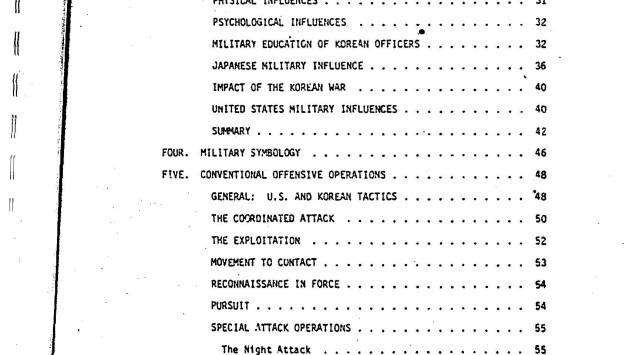Author/Editor: James M. Simpson
Publisher/Sponsor: Command and General Staff College
Report Date: 1980
Description:
During the Korean War, the Republic of Korea placed its military under the control of then United Nations commander General Douglas MacArthur. The United Nations Command headquarters, overwhelmingly made up of foreign officers, was responsible for the defense and military strategy of the ROK. By the mid-1960s the UNC looked to increase ROK participation in order to improve military planning. In 1978, the Combined Forces Command was established as the headquarters for ROK-U.S. forces in South Korea and the responsibilities of the UNC were taken over by the CFC. The CFC’s mission was to enhance interoperability, but, at the time of this report, few steps had been taken to study and reduce the problems caused by differences between the two country’s tactics.
This report explores the differences between South Korean and U.S. Army tactics looking at historical, social, psychological and physical factors by exploring conventional attack operations, defense tactics, “special” operations and unconventional warfare tactics. The report also examines the degree to which differing tactics pose problems to combined operations and provides recommendations to resolve these problems.
The report states that “one weakness in the American forces’ relations with the Republic of Korea (R.O.K.) Army over the past several decades has been an assumption that the Koreans have patterned themselves after the Americans. Although the Korean Army has patterned many of its tactical concepts after the American tactics, in an attempt to achieve a degree of interoperability, they are independent thinkers and have developed a form of fighting which is consistent with the Korean personality, terrain and perceived threat. To achieve the tactical interoperability which is now envisioned to be the cornerstone of allied operations in Korea, it is essential that these differences be recognized and that a concerned attempt be made to reconcile differences which could endanger combined operations.” [page 3]
This report was released to the Nautilus Institute under the US Freedom of Information Act (FOIA).


